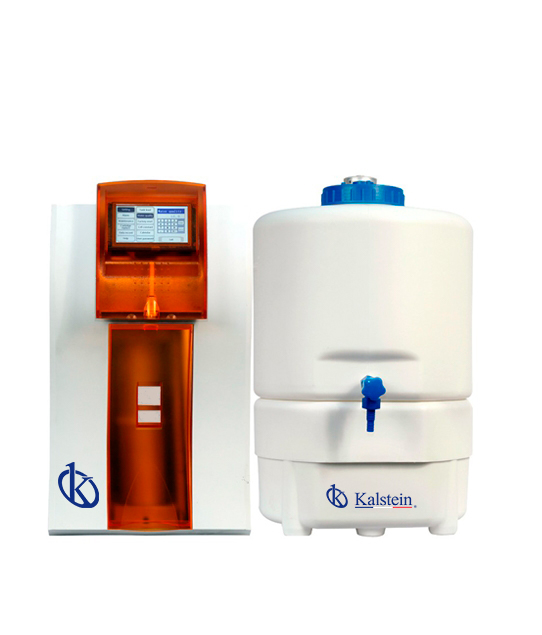A water deionizer is a water purification equipment, with direct connection to the network and continuous flow, which performs a filtration of water through mixed bed resins by ion exchange. That is, the cation and anion exchange resins are intimately mixed and contained in a single pressure vessel. Resulting in that the quality of the water obtained from a mixed bed deionizer is appreciably high.
Water deionization is a process that is performed when there is an immediate need for purified water distribution. It is imperative that deionization takes place when the water is close to being used, as the extremely high purity of the water degrades rapidly.
How does a deionizer work?
Deionization systems work by replacing negative and positive molecules in water with hydrogen (positive) and hydroxyl (negative) molecules. In fact, organic substances are removed by filtration, which improves the quality of the water and prevents the formation of scale deposits. For this reason, deionized water is one of the most preferred use options in factories and manufacturing facilities.
It consists of the elimination of inorganic ions present in the water through the use of ion absorbing resins. They can be used relatively easily and do not require energy input. Deionizers contain insoluble cation exchange (RES – SO3H) and anion exchange (RES – CH2N (CH3) 3OH +) resins. These resins can be stored in separate columns or in a mixed bed column. Tap water passes through the resin columns, which exchange the solute electrolytes for H + and OH- ions.
Cation exchange resins are negatively charged to capture positively charged ions (Cations) and anion exchange resins are positively charged to capture negatively charged ions (Anions).
The resins must be regenerated or replaced, according to the manufacturer’s recommendations when the conductivity of the outlet water is greater than 20 mS / cm, therefore they must be checked regularly to make sure that they are not saturated and that they produce the sufficient level of purity required. This test is performed by measuring the electrical conductivity of the treated water.
Electrical conductivity is the property that inorganic salts in solution (electrolytes) have to conduct electrical current, that is, pure water practically does not conduct electrical current while water with dissolved salts conducts it very well (sea water) . The positively or negatively charged ions are those that conduct the current and the quantity conducted depends on the number of ions present and their mobility.
What are the advantages of a deionizer?
These are some of the many advantages that are achieved by performing the water deionization process:
- High quality demineralized water.
- Low investment cost: in many cases only the service is paid.
- No pump is used: the system works with the pressure of the network (generally <800 kPa / 8 bar).
- If there are chemicals on the user’s site.
- It does not require maintenance.
- There is no handling of resins on the user’s site.
- There is no spillage.
- Quick change of bottles (generally within 1 to 3 days).
- Traceability: the supplier ensures that the resins used at each site are compatible with the intended use.
At Kalstein we are MANUFACTURERS and we offer you an excellent range of autoclaves designed with the highest technology and quality, at the best prices on the market. That is why we invite you to take a look at HERE




